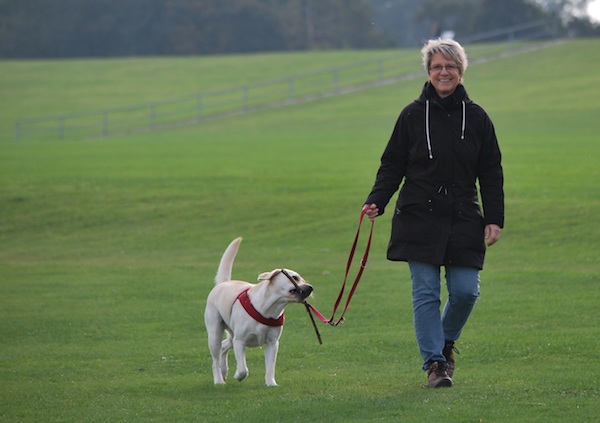Tips For Safe Hiking
We have moved away from the heat of the summer, and many people are making their way outdoors to enjoy the crisp air and changing colours. There are many outdoor fall activities you can enjoy as a family or solo, and hiking has increased in popularity over the past few years. The cooler temperatures and beautiful photo opportunities have allowed people to appreciate the outdoors while improving their physical fitness.
Prepare With a Plan
 But, before you meet a friend or pack up your family for a few hours in the woods, here are 5 suggestions for keeping yourself safe and injury-free:
But, before you meet a friend or pack up your family for a few hours in the woods, here are 5 suggestions for keeping yourself safe and injury-free:
- Dress appropriately for the weather. Nothing ruins a morning more than being wet and cold. Check the weather ahead of time so you can dress appropriately in layers that are easy to add or remove. Ensure your shoes are appropriate for your activity level as well; thick treads are perfect for preventing slips. Don’t forget the bug spray either; ticks are tiny and can/will stick to skin or clothing and follow you home!
- Stretch first. Hiking is exercise, and like all other forms of exercise, warming your muscles up with some light stretches is essential.
- Know your trail, and don’t abandon it. It is easy to get carried away in the abundant nature of a hike and lose your way. There are hiking apps that can be used to help you remain on a chosen trail, but if you decide not to use one, please ensure you have familiarized yourself with the trail you will be on. Getting lost in the woods is no fun.
- Choose a hiking trail that matches your fitness level. It is better to start slow and move up the ladder of difficulty than to begin with a trail that is too hard and give up. You are at a significantly increased risk of developing an injury on a hike that is too challenging. Keep it simple at first; you will get to an expert level of hiking in no time if you start slowly.
- Take breaks. A hike is not a race; taking breaks is required to have some water and monitor your bearings. Take a minute to slow down and check your map, and ensure you are still able to easily carry on a light conversation with your hiking partner(s). Breaks are also a great time to observe your surroundings and enjoy them.
Hiking Has Many Health Benefits
Regular hikes are a great cardio, weight-bearing, stress relieving, blood pressure reducing, and blood sugar lowering activity! Yes, all of these are benefits of hiking. The benefits are endless, and the cost is low.
Hike Smart
Hiking smart is a great way to remain active and spend time outdoors alone or with people whose company you enjoy. Fall has always been a popular time to get outdoors and move your body because we are often recovering from the heat of the summer. The changing colours of the leaves and the crisp air are an added bonus to our senses and our state of mind.
If you have questions about how you can Hike smarter, you can always consult with us to ensure you take the best care of your body.
Yard Work, Your Garden, And Why Your Chiropractor Needs to be Involved
Winters can be long and intense, so naturally, many look forward to the changing seasons to get the yard and garden in working order for the spring and summer. Many people enjoy creating an outdoor oasis where they can relax and enjoy the warmer months outside. However, taking on these tasks after months of being sedentary can cause stiffness, pain, and sometimes injuries. While chiropractic care can help with pain after it is generated, the ideal method is to stop it before it starts.
How Can We Help?
 We always start with a consultation, and if you’re an existing patient, then we want to know what your concerns are or what activities you will be engaged in. Yard work or gardening may not seem like an enormous physical undertaking. Still, even the smallest garden requires repetitive movement you may not be accustomed to. Your chiropractor will assess what your warm-up should consist of, along with plans on how to bend, lift and twist. The goal will always be to provide prevention and relief for stiffness and pain without medication.
We always start with a consultation, and if you’re an existing patient, then we want to know what your concerns are or what activities you will be engaged in. Yard work or gardening may not seem like an enormous physical undertaking. Still, even the smallest garden requires repetitive movement you may not be accustomed to. Your chiropractor will assess what your warm-up should consist of, along with plans on how to bend, lift and twist. The goal will always be to provide prevention and relief for stiffness and pain without medication.
What Are Some Common Tips to Prevent Muscle Pain Before it Starts?
- Warm-up: The most straightforward stretches to remember start with touching (or trying to) your toes, then reaching for the sky and clamping your fingers together while leaning back very slightly. Follow this with a brisk walk around your property to get your blood flowing.
- Bend at the knees: Cannot stress this enough, but bending and lifting with your back is a recipe for disaster. Always bend and lift with the strongest part of your body, your legs!
- Gardening gadgets work: Items like gardening stools can help save your knees and back, knee pads are great for kneeling, weed removers are perfect for preventing injuries from constant bending, and anything that has been designed to make your job easier.
- Drink more water than you think you need to: Dehydration leads to fatigue and headaches. In addition to the inconvenience and discomfort of these commonly known side effects, your body requires lots of water to keep your joints lubricated and your muscles from cramping.
- Enjoy yourself: Our spring and summer season doesn’t last long enough, so enjoy your time outside, creating your warm-weather oasis. Get creative, spend time with friends and family, and use this space often.
After a long fall and winter season, you must ease into yard work with cautious optimism and a sense of joy. We cannot allow an injury to steal this joy, so please consult with us to see how you can make the most of these months in a safe and enjoyable way.


